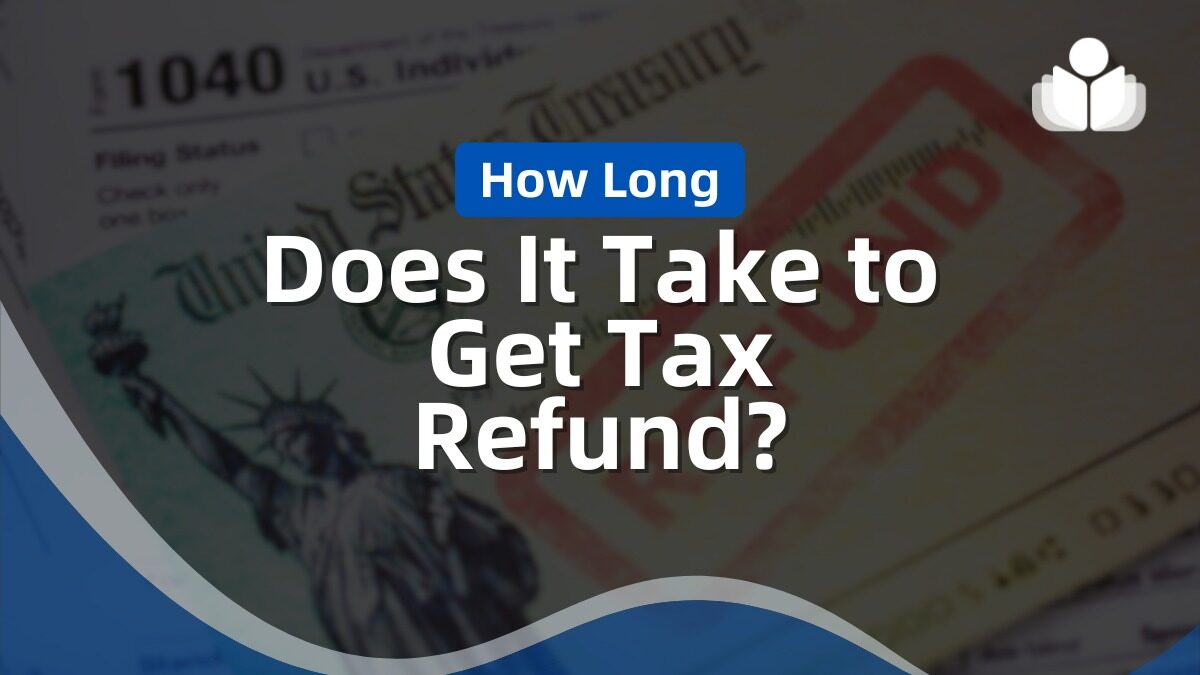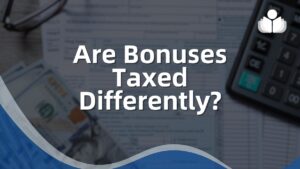Tax season can evoke different emotions depending on whether you anticipate receiving a tax refund or not. If you do expect a refund, it can provide an opportunity to enhance your savings, make headway toward financial goals, or establish a stable financial foundation.
However, the question of how long it takes to receive your refund is crucial when discussing tax refunds. Continue reading to gain insight into the process and timeline of obtaining your refund, factors that may affect the timing, methods for tracking its progress, and additional information.
The IRS Tax Refund Process
The Internal Revenue Service (IRS) has a highly detailed procedure in place for handling tax returns and issuing tax refunds. The initial step involves the IRS accepting your return, which typically occurs within 24-48 hours.
During this period, the IRS ensures that the personal information provided on your return matches their records. If everything aligns, you will receive a notification confirming that the IRS has accepted your return. This is when the countdown begins for your refund timeline.
You can contribute to expediting the approval of your return by ensuring its accuracy. For approval, the IRS must authenticate your personal details and cross-reference them with their own records. Any inaccuracies on your return may cause delays in this verification process.
You’ll receive a notification from the IRS once they have accepted your tax return. In case you don’t receive any notification, you can visit their website to check for updates regarding its status. If more than 48 hours pass without approval of your return, the IRS may face challenges verifying some of the information provided.
IRS Tax Refund Timeline
The timeline for receiving an IRS refund starts after your tax return has been accepted, typically within 24 to 48 hours of filing. The length of time it takes to receive your refund will vary based on how you filed and the method you chose for receiving your refund. This information can be found in the provided resource.
- E-file/Direct deposit: 1-3 weeks
- Paper file/Direct deposit: 3 weeks
- E-file/Check: 1 month
- Paper file/Check: 2 months
Where’s My Tax Refund?
After successfully filing your taxes and receiving confirmation of acceptance, you may find yourself eagerly wondering how long it will take for the IRS to approve your refund. While the bureaucratic gears of the tax system are set in motion, here’s what you can anticipate regarding timing.
Regarding IRS approval, they strive to review and authorize refunds quickly and efficiently. Historical data shows that over 90% of refunds are processed and approved within 21 days after accepting e-file submissions. The excitement builds as you realize that approval brings you one step closer to a welcomed boost in your bank account.
To better understand when to expect your refund, consult the IRS refund schedule published each tax season. While the IRS doesn’t guarantee these dates, they’re a reliable guide for estimating when you might receive your direct deposit or refund check.
Once the IRS approves your refund, how long does it take to appear in your bank account? Fortunately, not very long at all. Financial institutions typically process direct deposit refunds within a few days. However, the exact timing can vary depending on individual bank processing times and volumes.
Tracking the arrival of your tax refund: Waiting for your tax refund can be compared to waiting for a seed to sprout, it requires some patience but eventually pays off. One way to speed up the process is by opting for direct deposit.
This electronic transfer method ensures the fastest refund delivery from the U.S. Treasury to your bank account. Typically, banks take one to two days to deposit funds, although it may happen even quicker.
Throughout this process, if you’re wondering when you’ll receive your tax refund, it’s best to stay informed and keep in touch with your bank since they will provide the final step in the refund procedure.
Factors Influencing Tax Refund Processing Time
The time it takes for your refund to be processed can be influenced by several factors, such as how you filed your taxes, the method you choose for receiving your refund, and the details provided in your tax return.
- E.filing vs. Paper Filing: The method you choose for filing your taxes is a crucial factor impacting the speed of your refund processing. Generally, submitting your return electronically results in a considerably faster refund compared to traditional paper filing. With electronic filing, you could receive your refund within one week, whereas paper filing typically takes around three weeks. Tax preparation software makes e-filing your tax return simple and convenient.
- Refund Method: The manner in which you opt to receive your refund also influences the timeline for receiving it. Typically, refunds are processed more swiftly via direct deposit compared to receiving a paper check. While direct deposit may take approximately one month for e-filed returns, receiving a paper check can extend the process to around two months, particularly if filing by mail.
- Date of Return Acceptance: The date when your tax return is accepted plays a significant role in determining your position in the queue for refund processing. Even if you filed your return earlier than someone else, delays in accepting your return can result in a later refund issuance.
- Accuracy of Information: Ensuring the accuracy of all details on your tax return, including personal and bank account information, is essential. An accurate return not only helps prevent audits and legal issues but also expedites the refund process. Inaccurate information, particularly if suspected of fraud by the IRS, can lead to significant delays.
- IRS Processing Times: Delays in receiving your refund may occur during periods of high demand or IRS processing delays. Staying informed about IRS announcements regarding any delays can provide insight into potential delays in receiving your refund.
- Certain Tax Credits: The IRS is legally prohibited from issuing refunds for certain tax credits until mid-February. If you claimed the Earned Income Tax Credit or Additional Child Tax Credit, regardless of filing early, refunds are typically issued in the latter part of February.
How Do I Find the Current Status of My Refund?
The tool called “Where’s My Refund?” allows you to check the progress of your refund by visiting the IRS website or using the IRS2Go mobile app. If you file your tax return electronically, you can expect to see updates on your refund within 24 hours.
However, if you choose to mail in your tax return, it will take at least four weeks before any information about your refund becomes available. It’s important to note that typically in January is when most people file their taxes.
To determine the status of your tax refund, certain information is required including your Social Security number (SSN), filing status, and the exact dollar amount that you anticipate receiving as a refund.
It’s crucial to ensure that you enter these details accurately because entering an incorrect SSN may trigger an error code known as IRS Error Code 9001. This could result in additional steps being taken for identity verification and ultimately cause a delay in receiving your tax refund.
What’s Taking So Long to Receive Refunds?
If your tax refund isn’t received within 21 days, it may require further examination. This could be due to an incomplete or inaccurate tax return. In such cases, the IRS may send you instructions via mail requesting additional information to process your return.
Delays can also occur if you have claimed the Earned Income Tax Credit or the Additional Child Tax Credit. According to the Protecting Americans from Tax Hikes (PATH) Act of 2015, tax returns that include these credits must be held by the IRS until February 15th. If you have claimed either of these credits, using the Where’s My Refund? tool might display a PATH Act message.
If your refund has not been received and impatience sets in, contacting the IRS directly will likely not expedite matters. It’s advisable to refrain from reaching out to them unless prompted by the Where’s My Refund? tool or if it has been 21 days since filing electronically (or six weeks for paper returns).
>> Get Started With TurboTax >>
What’s the Difference Between IRS Acceptance of a Return and Approval of a Refund?
During the process of filing your tax return, there are important steps to consider that provide insight into the status of your submitted documents with the IRS. Now, let’s examine the distinction between receiving a return and having a refund approved.
IRS Acceptance of a Return: Return Received
Once the IRS acknowledges your submission, it indicates that they have received and reviewed it for any fundamental mistakes such as incomplete details or significant concerns. Your submission has been placed in line for further processing.
Approval of a Refund: Refund Approved
When the IRS approves a refund, it indicates that they have thoroughly examined your tax return. They have assessed your income, deductions, and any credits you have claimed. If all the figures align and you have overpaid in taxes, the IRS will give their approval for a refund. At this stage, they will determine the precise amount that you’re entitled to receive back.
How Long Does It Take for a Refund to Go From Received to Accepted?
The duration for a tax return to move from the status of “received” to “accepted” can differ. Generally, if you choose to electronically file your tax return, this conversion can occur swiftly, often within a few days.
On the other hand, if you opt for filing a paper return, this procedure may take longer because it involves the physical document being delivered to the IRS and manually inputted into their system.
Nevertheless, there exist certain exceptional situations that might extend your waiting period. Let’s examine them in detail.
Making the Most of Your Tax Refund
Do you have a game plan for how to use your tax refund this year? Receiving a tax refund presents an ideal chance to make strides towards achieving your financial objectives. Let’s discuss some possibilities for utilizing your tax return in ways that will enhance your overall financial standing.
- Pay down debt: If you’re actively reducing debt, using your tax refund to make an additional payment can expedite your progress. Consider allocating your refund towards your highest-interest debt, such as a credit card balance.
- Build an emergency fund: An emergency fund serves as a financial safety net for unforeseen expenses or income disruptions. Financial experts generally advise having three to six months’ worth of living expenses saved for emergencies, and your tax refund could help you make strides toward achieving that target if you haven’t already.
- Boost your retirement savings: While it may seem counterintuitive to allocate a cash windfall towards retirement, which is likely decades away, consider the long-term impact. Even a modest increase of $1,000 in your retirement account today could potentially grow to over $17,000 in 30 years.
- Saving for a Home Down Payment: Saving for a home purchase is often a lengthy endeavor for prospective buyers. Allocating your tax refund towards a future down payment could significantly expedite the process, potentially shaving off months or even years from your goal timeline.
- Indulge a little: While it’s important to prioritize financial objectives, it’s equally essential to enjoy life along the way. Allocate a portion of your tax refund towards something enjoyable and discretionary. This not only provides a psychological boost but also helps prevent burnout and maintains motivation towards your financial goals.
How Long Does It Take to Get a Tax Refund? – FAQs
Why Is My Refund Less Than I Expected?
Your refund might be lower than anticipated for the following reasons:
- You could have committed a calculation error or another mistake on your return
- The IRS might have subtracted the following amounts from your refund
- Outstanding federal or state taxes
- Arrears in child support payments
- Overdue non-tax federal debts, such as student loans
Upon receipt, you’ll be provided with a notification detailing the error or modifications made to your refund. This notice will contain clarifications regarding deductions for previous debts. Due to the separate IRS locations responsible for issuing your refund check and sending the notice, it’s possible that you may receive an explanation subsequent to receiving the refund check.
What Information Will I Need to Check My Refund Status?
To obtain details regarding your reimbursement and verify its progress, certain requirements must be met.
- Your Social Security number or taxpayer identification number
- Your filing status
- The precise refund amount indicated on your return
How to Use the IRS2Go App for Status Updates?
The IRS has created IRS2Go, a mobile application that serves as a compact edition of the “Where’s My Refund?” tool. This app can be easily downloaded onto your smartphone at no cost to you.
Once you have installed the app, you will need to input identical information as required by the “Where’s My Refund?” tool. This includes your Social Security number, filing status, and refund amount. Subsequently, the app will provide real-time updates on the progress of your refund. It’s incredibly convenient for individuals who are constantly on the move and need quick access to this information.
>> Get Started With TurboTax >>
The Bottom Line
If you’re anticipating a tax refund, there’s no need to fret or speculate about the duration it will take for you to receive your refund. The details provided within this article should give you a reasonable estimate of when your refund may be issued, depending on how you filed your taxes and how your refund will be processed.
It’s crucial to emphasize the significance of accuracy when completing and submitting your tax return. Providing incorrect information can delay receiving your refund, potential audits, suspicions of fraudulent activity, and other undesirable consequences.
To mitigate these risks and expedite receiving your refund, enlist the assistance of reliable tax preparation software or seek guidance from a reputable professional in this field.
 Sections of this topic
Sections of this topic
















